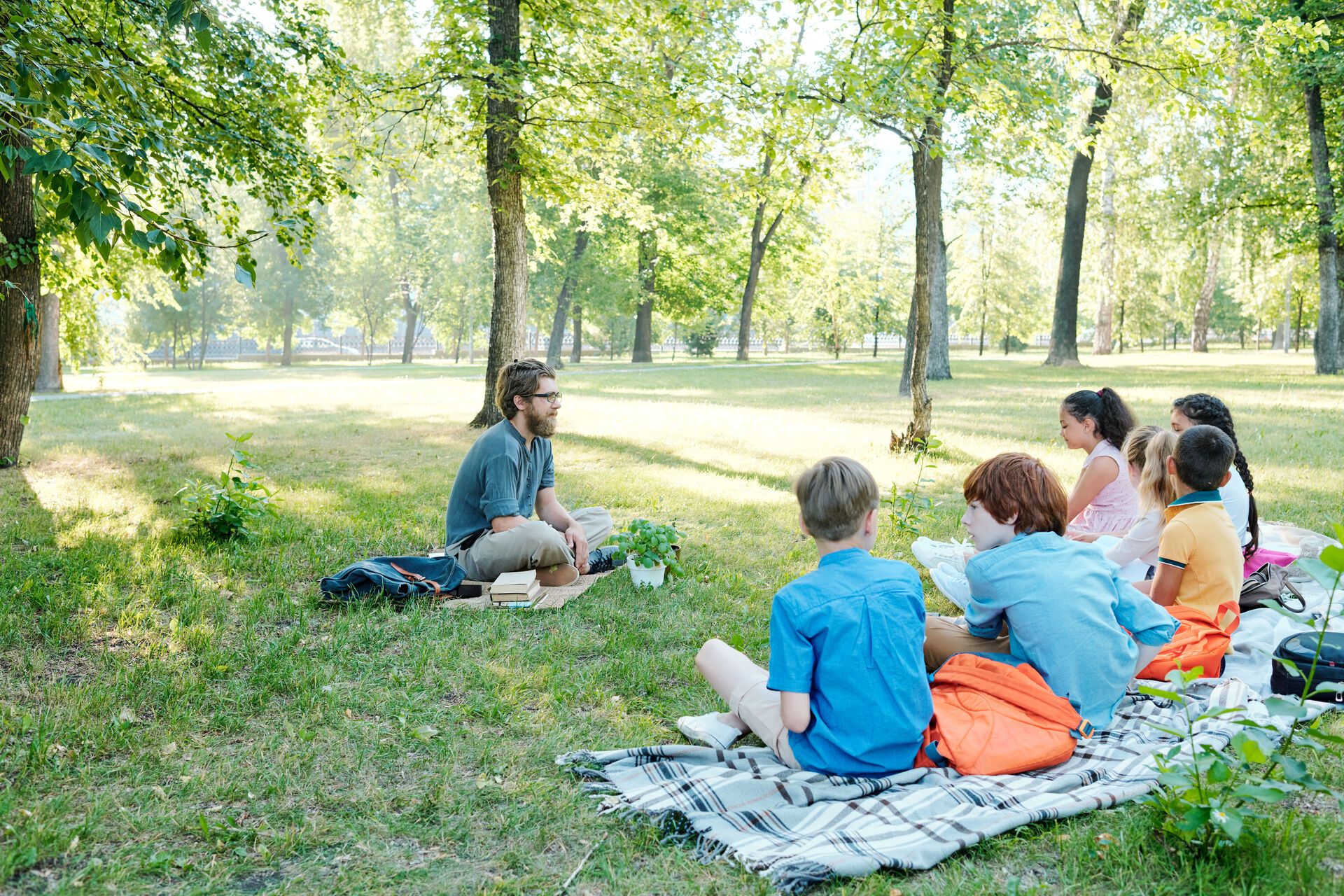An earlier study on home schooling during the school closures in Denmark revealed that pupils’ mental and social well-being was challenged by the new learning situation and the isolation they experienced being separated from their peers and teachers. Children often spent the school days sitting alone, working on individual tasks in a teacher directed learning situation
Qvortrup’s most recent research shows that the subsequent school re-opening phase forced teachers to be more creative about their teaching in order to comply with the new safety measures. Teaching often took place outdoors, which is quite unusual, and in smaller groups. After the challenging and isolating period of school closures, children were now back at school and in a learning environment engaging with others and their teachers.
Qvortrup's study aims to investigate how the learning environments impact on the pupils’ emotional, social and academic well-being, and what the conditions for creating playful learning environments are. There are four activities that align with a playful learning environment: project-based learning, guided discovery learning, inquiry based learning and problem-based learning (Parker & Thomsen 2019). Children found that these kinds of activities were part of the teaching in the re-opening phase to a greater degree than before the closures. Playful learning environments offer opportunities to explore and investigate, enhance meaning, and are generally motivating and joyful.
Happy to be back at school
Qvortrup is looking at what kinds of socio-emotional experiences children have as they re-enter the learning environment.
– Sosio-emotional experiences are multifaceted in nature, and incorporate aspects of emotional well-being, as well as positive functioning socially and academically, Qvortrup explains.
– Perceived coping, that is to say, the feeling of mastering situations, also influences the socio-emotional experience.
Both the uncertainty of the closing period and the new, adapted teaching situation after the re-opening had an impact on the pupils’ coping.
The survey shows that in the re-opening phase pupils had higher socio-emotional well-being than during the closure. Some of the reasons could be that they missed the school community and even their teachers - as shown by Qvortrup’s earlier survey - and were now happy to be back at school.
The new teaching situation also involved teaching in smaller groups that provided a higher level of social well-being to many children.
– There have been children that have blossomed because of it, because they get to stick to a fixed group.
– Classroom community is better than before and teachers’ report that they have been able to engage and reach children they couldn’t before, Qvortrup explains.
Scoring low on academic well-being
However, the survey reveals that the pupils’ academic well-being is now lower than their social and emotional well-being.
This could just be the case right after the opening, but Qvortrup is continuing research to see if this changes during the autumn. Since the pupils score so high on their socio-emotional well-being, the question now is what is influencing the academic well-being?
The four activities that are characteristic of playful learning environments positively influence academic well-being. Children want the new conditions of teaching to be utilised – for example, for it to be meaningful to have the lesson outside, the teaching situation has to be used differently, not just for doing the same things as before. The four activities of playful learning environments offer ways to make use of being outdoors and working in smaller groups.

Other predictors for academic well-being are contact with the teachers and the class community, and perceived coping, defined as pupils’ feeling of being able to master situations.
Supporting children to feel they master situations
Pupils are affected by the many changes taking place. It is interesting to see that while during the school closures pupils’ socio-emotional well-being was challenged, they now have a lot higher degree of socio-emotional well-being. This could be because schools have focused so much on their mental well-being during this time. At the moment pupils are however nervous about academic well-being; they are nervous they won’t reach the standards required for their future educational needs. At the same time teachers are nervous themselves about the emergency teaching situation.
Qvortrup’s recommendation is now to focus more on academic well-being. This includes talking with the pupils and reassuring that they will reach the standards required. In order to further support their academic well-being, it helps to focus on different aspects i.e. by utilising the outdoors and new environments to create playful learning environments, and facilitating contact with the teacher and class community. It is also important to focus on perceived coping, so that we support pupils to feel they can master situations, by giving them more feedback and positive reinforcement.
– We can see that it is not the structural aspects that influence academic well-being, but the activities, contact and the class community, Qvortrup points out.
